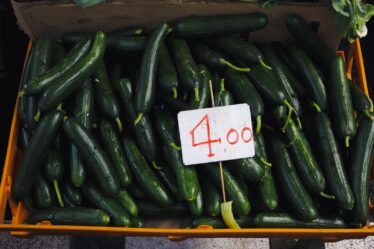
Gourmet cooking salt has become increasingly popular among chefs and home cooks alike. This type of salt is known for its unique flavors, textures, and origins, which can elevate any dish to a whole new level. In this article, we will explore the different types of gourmet cooking salt, the benefits of using it in your dishes, how to choose the right salt for your recipe, and various techniques for incorporating it into your cooking. We will also discuss how gourmet cooking salt can enhance the flavor and aroma of your dishes, elevate desserts, pair with wine and other beverages, and even enhance the visual appeal of your creations.
Key Takeaways
- There are different types of gourmet cooking salt, including sea salt, Himalayan pink salt, and fleur de sel.
- Using gourmet cooking salt can enhance the flavor and texture of your dishes, as well as provide health benefits.
- When choosing gourmet cooking salt, consider the flavor profile and texture of the salt, as well as the dish you are making.
- Texture plays an important role in gourmet cooking salt, with some salts being better suited for finishing dishes and others for cooking.
- Gourmet cooking salt can impact the flavor and aroma of your dishes, with some salts bringing out certain flavors and others complementing them.
Understanding the Different Types of Gourmet Cooking Salt
Gourmet cooking salt comes in a variety of types, each with its own distinct characteristics. Some popular types include sea salt, Himalayan pink salt, fleur de sel, and smoked salt. Sea salt is harvested from evaporated seawater and is known for its large crystals and briny flavor. Himalayan pink salt is mined from ancient sea beds in the Himalayan mountains and is prized for its delicate flavor and beautiful pink color. Fleur de sel is hand-harvested from the surface of salt ponds and has a light, flaky texture and a subtle flavor. Smoked salt is infused with smoke during the drying process, giving it a unique smoky flavor that can add depth to dishes.
Each type of gourmet cooking salt has its own texture, flavor profile, and origin. Sea salt tends to have a coarser texture compared to other salts, making it ideal for finishing dishes or adding a crunchy texture. Himalayan pink salt has a finer texture and milder flavor, making it versatile for use in both savory and sweet dishes. Fleur de sel has a delicate texture that melts on the tongue and adds a subtle briny flavor to dishes. Smoked salt adds a smoky aroma and flavor that can enhance grilled meats, roasted vegetables, or even cocktails.
The Benefits of Using Gourmet Cooking Salt in Your Dishes
Using gourmet cooking salt in your dishes not only adds flavor but also offers health benefits. Unlike table salt, which is heavily processed and stripped of its natural minerals, gourmet cooking salt retains its natural mineral content. These minerals, such as magnesium, potassium, and calcium, are essential for maintaining a healthy body. Additionally, gourmet cooking salt is often lower in sodium compared to table salt, making it a healthier option for those watching their sodium intake.
In addition to the health benefits, gourmet cooking salt can enhance the flavor and aroma of your dishes. The unique flavors and textures of different types of salt can add depth and complexity to your recipes. For example, a sprinkle of fleur de sel on top of a chocolate dessert can bring out the richness of the chocolate and add a subtle salty-sweet contrast. Similarly, a pinch of smoked salt on grilled vegetables can add a smoky flavor that takes the dish to another level.
How to Choose the Right Gourmet Cooking Salt for Your Recipe
| Factors to Consider | Types of Gourmet Cooking Salt | Characteristics |
|---|---|---|
| Flavor | Sea Salt | Delicate, mild, briny, mineral-rich |
| Himalayan Pink Salt | Subtle sweetness, mineral-rich, earthy | |
| Fleur de Sel | Light, delicate, slightly moist, mineral-rich | |
| Smoked Salt | Intense, smoky, savory, earthy | |
| Texture | Kosher Salt | Coarse, crunchy, easy to pinch, dissolves quickly |
| Flake Salt | Thin, flat, crisp, dissolves slowly, adds crunch | |
| Rock Salt | Large, irregular crystals, adds texture, slow to dissolve | |
| Color | Black Salt | Dark, earthy, sulfurous, pungent |
| Red Salt | Earthy, slightly sweet, mineral-rich | |
| Gray Salt | Earthy, mineral-rich, slightly moist |
When choosing gourmet cooking salt for your recipe, there are several factors to consider. First, consider the flavor profile you want to achieve. If you’re looking for a subtle briny flavor, fleur de sel or sea salt may be the best choice. If you want a more intense flavor, smoked salt or Himalayan pink salt could be the way to go. Consider the other ingredients in your dish and how the flavors will complement each other.
Another factor to consider is the texture of the salt. Coarser salts like sea salt are great for finishing dishes or adding a crunchy texture. Finer salts like Himalayan pink salt are better suited for baking or seasoning dishes during cooking. Consider how you want the salt to interact with the other ingredients in your dish and choose accordingly.
The Role of Texture in Gourmet Cooking Salt
Texture plays a crucial role in the overall flavor and mouthfeel of a dish. The texture of gourmet cooking salt can impact how it dissolves on the tongue and how it interacts with other ingredients. Coarser salts, like sea salt, have larger crystals that take longer to dissolve, providing a satisfying crunch and burst of flavor. These salts are often used as a finishing touch on dishes to add texture and enhance the overall experience.
Finer salts, like Himalayan pink salt or fleur de sel, have smaller crystals that dissolve quickly on the tongue. These salts are ideal for seasoning dishes during cooking or adding a subtle flavor without overpowering the other ingredients. The delicate texture of these salts allows them to blend seamlessly into the dish, enhancing the flavors without being too noticeable.
The Impact of Gourmet Cooking Salt on Flavor and Aroma

Gourmet cooking salt has a significant impact on the flavor and aroma of a dish. Salt is known as a flavor enhancer, and using gourmet cooking salt can elevate the taste of your dishes to new heights. The unique flavors of different types of salt can add complexity and depth to your recipes.
For example, sea salt has a briny flavor that can enhance the natural flavors of seafood dishes. Himalayan pink salt has a milder flavor that can enhance the sweetness of fruits or balance out the acidity in a salad dressing. Smoked salt adds a smoky aroma and flavor that can transform grilled meats or roasted vegetables.
When pairing gourmet cooking salt with different flavors and aromas, it’s important to consider how they will interact. For example, pairing a citrusy dish with a salt that has a citrusy undertone can enhance the overall flavor profile. Similarly, pairing a rich, fatty dish with a salt that has a smoky flavor can add depth and balance to the dish.
The Science Behind Gourmet Cooking Salt and Food Pairings
The science behind salt and food pairings lies in the chemistry of taste. Salt enhances the perception of other flavors by suppressing bitterness and enhancing sweetness. When paired with the right ingredients, gourmet cooking salt can create a harmonious balance of flavors.
When pairing salt with different types of food, it’s important to consider the intensity of the flavors. For example, if you’re pairing salt with a delicate fish, you may want to use a milder salt like fleur de sel to avoid overpowering the fish’s natural flavors. On the other hand, if you’re pairing salt with a rich, fatty cut of meat, you may want to use a more intense salt like smoked salt to add depth and balance.
Experimenting with different types of gourmet cooking salt and food pairings can be a fun and creative way to enhance your culinary skills. Don’t be afraid to try new combinations and see how different salts can transform your dishes.
Techniques for Incorporating Gourmet Cooking Salt into Your Cooking
There are various techniques for incorporating gourmet cooking salt into your cooking. One common technique is to season dishes with salt during the cooking process. This allows the salt to dissolve and distribute evenly throughout the dish, enhancing the flavors as it cooks. For example, when making a pasta sauce, adding a pinch of sea salt or Himalayan pink salt while simmering can bring out the flavors of the tomatoes and other ingredients.
Another technique is to use gourmet cooking salt as a finishing touch on dishes. This involves sprinkling a small amount of salt on top of the finished dish just before serving. This technique adds texture and enhances the overall flavor profile. For example, sprinkling fleur de sel on top of a salad or roasted vegetables can add a subtle briny flavor and a satisfying crunch.
Elevating Your Desserts with Gourmet Cooking Salt
Gourmet cooking salt is not just for savory dishes – it can also elevate your desserts to a whole new level. The addition of a small amount of salt can enhance the flavors and balance the sweetness in sweet dishes. For example, a sprinkle of fleur de sel on top of a caramel dessert can bring out the richness of the caramel and add a subtle salty-sweet contrast.
When using gourmet cooking salt in desserts, it’s important to consider the texture and flavor profile of the salt. Finer salts like Himalayan pink salt or fleur de sel are often preferred for desserts as they dissolve quickly and blend seamlessly into the dish. Experiment with different types of salt and desserts to find the perfect combination that enhances the flavors and textures.
Pairing Gourmet Cooking Salt with Wine and Other Beverages
Pairing gourmet cooking salt with wine and other beverages can enhance the flavor experience and create a harmonious balance. Just as salt enhances the flavors of food, it can also enhance the flavors of drinks.
When pairing gourmet cooking salt with wine, consider the flavor profile of both the wine and the salt. For example, a crisp, citrusy white wine may pair well with a salt that has a citrusy undertone. Similarly, a bold, full-bodied red wine may pair well with a salt that has a smoky flavor.
In addition to wine, gourmet cooking salt can also be paired with other beverages such as cocktails or mocktails. For example, rimming a margarita glass with smoked salt can add a smoky flavor that complements the tequila and citrus flavors in the drink. Experiment with different types of salt and beverages to find unique combinations that enhance the flavors.
The Art of Presentation: Using Gourmet Cooking Salt to Enhance Visual Appeal
Gourmet cooking salt can also be used to enhance the visual appeal of your dishes. The texture and color of different types of salt can add visual interest and create beautiful presentations.
One technique for using gourmet cooking salt in presentation is to create a salt crust. This involves encrusting a piece of meat or fish with a layer of salt before cooking. The salt crust helps to seal in moisture and infuse the dish with flavor. Once cooked, the salt crust can be cracked open to reveal a perfectly cooked and beautifully presented dish.
Another technique is to use gourmet cooking salt as a garnish. Sprinkling a small amount of salt on top of a dish just before serving can add visual interest and enhance the overall presentation. For example, sprinkling fleur de sel on top of a chocolate dessert can create a beautiful contrast of colors and textures.
In conclusion, gourmet cooking salt is a versatile ingredient that can elevate any dish to new heights. The different types of gourmet cooking salt offer unique flavors, textures, and origins that can enhance the overall taste and aroma of your dishes. By understanding the different types of salt, considering the flavor profiles and textures, and experimenting with different techniques, you can unlock the full potential of gourmet cooking salt in your cooking. So go ahead, explore the world of gourmet cooking salt and let your culinary creativity soar!
If you’re passionate about gourmet cooking and looking to elevate your culinary creations, you’ll definitely want to check out this fascinating article on the discovery of spices. It takes you on a captivating culinary journey, exploring the origins and history of various spices that have become essential in our kitchens. From the exotic flavors of cinnamon and cardamom to the fiery kick of chili peppers, this article delves into the rich tapestry of spices that add depth and complexity to our favorite dishes. Discover how these aromatic ingredients have shaped cuisines around the world and learn how to incorporate them into your own cooking. To further enhance your culinary skills, don’t forget to explore other articles on Flavorful Sips, such as their guide to orange drinks and their simple banana bread recipe. Happy cooking!



